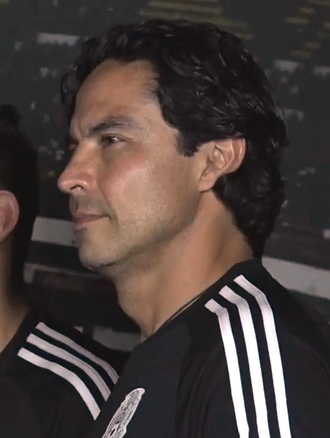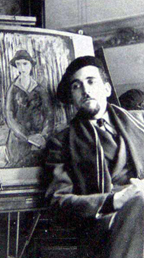Discover Your Roots
SIGN UPDiscover Your Roots
SIGN UPBraulio is a male name of Spanish origin, meaning "Shining." This name is often associated with individuals who possess a bright and radiant personality. Notable figures with the name Braulio include Brazilian jiu-jitsu practitioner and mixed martial artist Braulio Estima, Spanish singer-songwriter Braulio García, and Mexican politician Braulio Guerra, among others. The name Braulio reflects a sense of luminosity and positivity, making it a fitting choice for individuals who exude a charismatic and vibrant energy. In addition to its meaning, the name Braulio carries a sense of distinction and uniqueness, making it a popular choice for parents seeking a name with a powerful and uplifting significance for their sons.

Braulio Mauricio Luna Guzmán, born on September 8, 1974, is a retired Mexican professional footballer, known for his role as a midfielder. Luna commenced his professional football career in 1994, making his debut for UNAM Pumas in a remarkable 3–3 draw against León in the Mexican League Division. His exceptional skills and dedication led to his international debut for the Mexican national team on December 8, 1997, during a match against Australia in the 1997 FIFA Confederations Cup. Luna's talent earned him a spot in the 1998 and 2002 FIFA World Cups, where he showcased his prowess on the global stage. His contributions to the sport have been widely recognized, and he continues to inspire football enthusiasts worldwide. For more information about Braulio Luna, you can visit Esmas.com, Football Database.com, or National-Football-Teams.com for his profile, statistics, and other relevant details.

Braulio Castillo Cintrón (March 30, 1933 – February 28, 2015) was a renowned telenovela actor in Latin America, best known for his roles in Puerto Rican television soap operas during the 1950s and his leading role in the Peruvian telenovela "Simplemente María" ("Simply Mary"). Born in Bayamón, Puerto Rico, Castillo began his career as a musician in the Orquesta Mandolina before pursuing acting. He graduated from the University of Puerto Rico with a major in the performing arts.In the 1960s, he moved to Mexico where he appeared in Mexican films and worked on several Televisa productions. His contributions to the entertainment industry were significant, but in 1970, he suffered a head injury while filming and subsequently retired. Despite this, he occasionally made appearances on television.Castillo passed away at the age of 81 due to natural causes at the Santa Teresa Jornet elderly home in Trujillo Alto, Puerto Rico, and was laid to rest at the Porta Coeli Cemetery in Bayamón, Puerto Rico. His legacy lives on through his sons, Braulio Castillo, Jr. and Jorge Castillo, who have followed in their father's footsteps as actors.---I have created a summary text introducing the famous person, Braulio Castillo Cintrón, highlighting his career in the entertainment industry and his contributions to Latin American television. Let me

Braulio Salazar (1917–2008) was a renowned Venezuelan painter known for his innovative approach to art. Born on 23 December 1917 in Valencia, Salazar overcame health challenges to leave an indelible mark on the art world. His first exhibition in 1935 marked the beginning of a prolific career that would earn him numerous accolades. Inspired by his compatriot Armando Reverón, Salazar eschewed chemical products due to his medical condition and instead crafted his own colors using natural substances such as earth and vegetables. His dedication to teaching art extended to roles at the Pedro Gual high school, the Simón Rodríguez school, and the School of Plastic Arts Arturo Michelena. Additionally, he served as the head of the Art Workshop at the Department of Humanities in the Faculty of Engineering at the University of Carabobo. Salazar's contributions were recognized with prestigious awards, including the National Prize of Plastic Arts of Venezuela in 1976 and the Arturo Michelena Prize in 1948 and 1963. Today, his legacy endures at the Museum of Modern Arts of Valencia, which is named in his honor. For more information, the Central Bank of Venezuela and the Braulio Salazar Gallery offer detailed insights into his life and work.

Braulio Robinson Medrano Castillo, born on May 13, 1968, is a former professional baseball outfielder from the Dominican Republic. He had a successful career in Major League Baseball (MLB) playing for the Philadelphia Phillies. Castillo, a right-handed batter and thrower, was originally signed by the Los Angeles Dodgers as an amateur free agent in 1985. He later joined the Phillies in a trade involving relief pitcher Roger McDowell on July 31, 1991. Castillo made his MLB debut with the Phillies on August 18, 1991, and played his final game on October 4, 1992. His career statistics can be found on various sports platforms such as MLB, ESPN, Baseball Reference, Fangraphs, Baseball Reference (Minors), and Retrosheet. Braulio Castillo's impact on the game is evident in his professional journey, making him a notable figure in the world of baseball.

Braulio Peña de la Cruz (March 26, 1855 - April 25, 1924) was a prominent Cuban military officer and former chief of the Cuban Rural Guard of Puerto Príncipe. Born in Puerto Príncipe, Spanish Cuba, he played a significant role in the country's struggle for independence. Peña joined the Ten Years' War in the 1870s, attaining the rank of lieutenant colonel. He also participated in the Little War under Gen. Emilio Núñez, and later joined the Cuban War of Independence, serving with Gen. Maximo Gomez, who made him a colonel in the Cuban ranks. Peña organized several armed expeditions from the United States to aid the insurrection and was involved in numerous military operations. Post-independence, he was appointed as the Chief of the Cuban Rural Guard of Puerto Príncipe, where he oversaw the formation of 9 squadrons for patrols and public order in rural areas. Braulio Peña retired in 1906 due to declining health and passed away in Puerto Príncipe in 1924. His contributions to the Cuban struggle for independence and his leadership in the post-independence period have left a lasting legacy.
All images displayed on this page are sourced from Wikipedia or Wikimedia Commons.We use these images under their respective Creative Commons or public domain licenses. Wherever applicable, author attributions and license information are provided. If you believe an image is used incorrectly or outside its license terms, please contact us so that we can review and correct the issue.